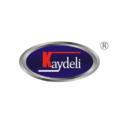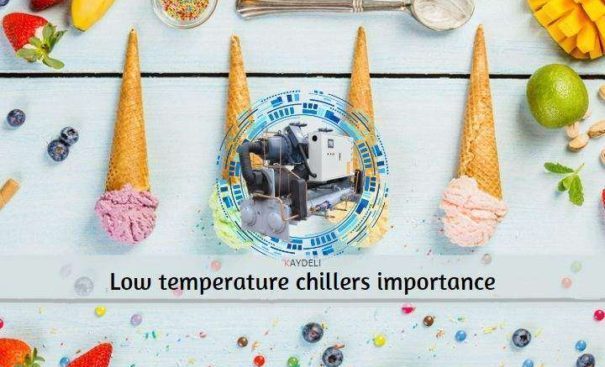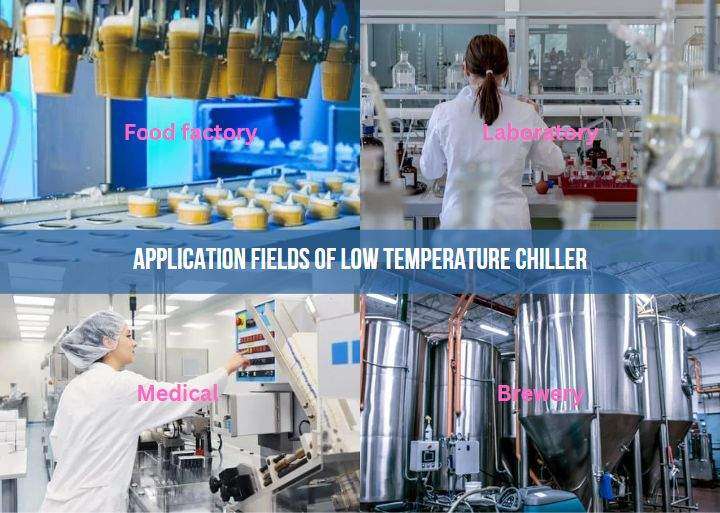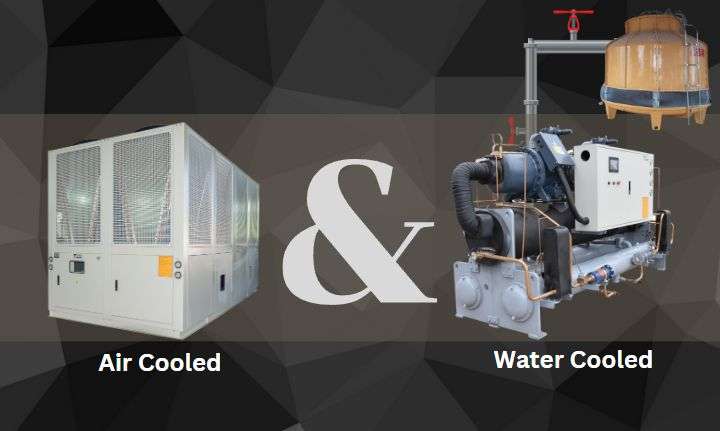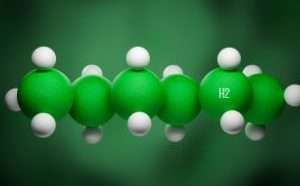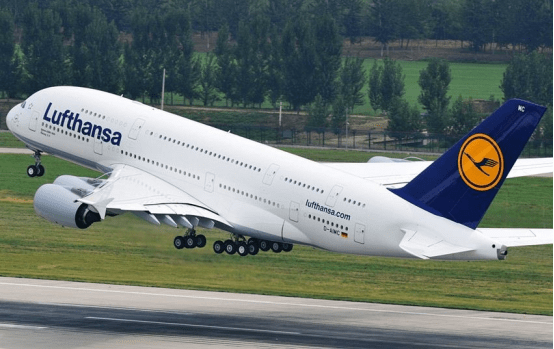Precision Temperature Control Made Easy
A low-temperature chiller unit, like other types of chiller units, works on the principle of refrigeration to remove heat from a process or environment and maintain a specific temperature. However, the unique feature of a low-temperature chiller unit is its ability to maintain extremely low temperatures with high precision.
The working principle of a low-temperature chiller unit begins with a compressor that circulates a refrigerant through a closed-loop system. As the refrigerant flows through the compressor, it is compressed and its temperature rises. The hot, compressed refrigerant is then passed through a condenser, where it is cooled and condensed into a liquid state.
From the condenser, the liquid refrigerant is passed through an expansion valve or throttle valve, which reduces its pressure and causes it to expand rapidly. This expansion causes the refrigerant to cool significantly, and it becomes a low-pressure gas as it enters the evaporator.
The evaporator is part of the chiller unit that comes into direct contact with the process or environment that requires cooling. As the low-pressure refrigerant gas passes through the evaporator, it absorbs heat from the process or environment, causing it to cool down. The now-warmed refrigerant gas is then returned to the compressor to begin the cycle again.
Low-temperature chiller units come in both Air-cooled and Water-cooled.
To maintain precise low temperatures, a low-temperature chiller unit may use additional components such as a refrigerant sub-cooling system, which cools the refrigerant below its condensing temperature before it enters the evaporator. This allows the chiller to maintain consistent low temperatures even in environments with high heat loads or fluctuations.
Overall, the working principle of a low-temperature chiller unit relies on the refrigeration cycle to maintain precise low temperatures through the compression, cooling, expansion, and evaporation of refrigerant. By utilizing high-quality components and advanced technology, Kaydeli’s low-temperature chiller units provide reliable, efficient, and precise temperature control for a range of applications.
Kaydeli is a leading manufacturer of low-temperature chiller units, which play a critical role in a variety of applications across many industries. These chiller units are designed to provide reliable, precise temperature control for a range of processes, from food and beverage production to medical and pharmaceutical applications.
One of the key benefits of Kaydeli’s low-temperature chiller units is their ability to maintain extremely low temperatures with high precision. This makes them ideal for applications that require precise temperature control, such as freeze-drying, cryogenic cooling, and other low-temperature processes.
In addition, Kaydeli’s low-temperature chillers are designed to be highly efficient, which can lead to significant energy savings over time.
There are many different applications for low-temperature chiller units in various industries. For example, in the food and beverage industry, these chillers are often used to cool or freeze products quickly and efficiently. They are also commonly used in pharmaceutical and medical manufacturing to maintain the temperature of sensitive materials, such as vaccines or blood products, during transport and storage.
Another key application for Kaydeli’s low-temperature chiller units is in research and development, where precise temperature control is essential for many types of experiments. Low-temperature chillers can be used to create controlled environments for testing materials or developing new technologies. They are also useful in scientific applications such as X-ray crystallography, which requires samples to be cooled to extremely low temperatures.
Overall, the importance of Kaydeli’s low-temperature chiller units cannot be overstated. They are critical components in many industries, providing precise temperature control for a range of processes. Whether you are working in food and beverage, medical manufacturing, research, and development, or another field, a high-quality low-temperature chiller unit from Kaydeli can help you achieve your goals with greater efficiency, accuracy, and reliability.
If you have any questions about Kaydeli’s low-temperature chiller units or would like to request a quote, please feel free to contact us.
No more confusion about chiller types.
Air-cooled chillers and water-cooled chillers are two common types of chillers used in HVAC systems for cooling large commercial and industrial buildings. While both types of chillers work to achieve the same goal. The job is to remove heat from a building, but there are significant differences in how both chillers operate, their performance, and the overall cost. Here are some details to compare air-cooled chillers and water-cooled chillers:
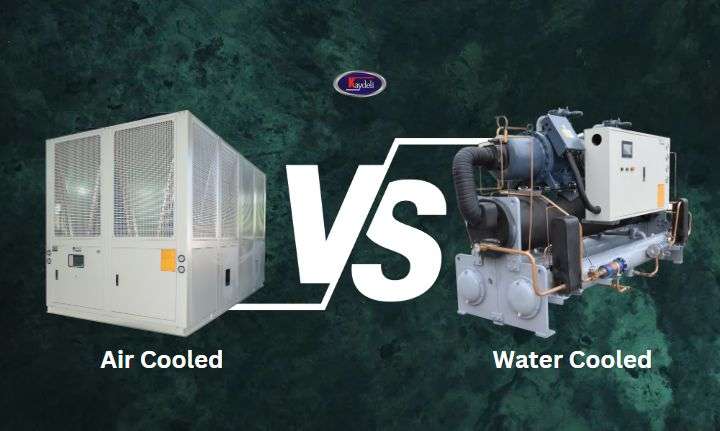
Operation and Components:
Air-cooled chillers are designed to dissipate heat to the atmosphere using air as the cooling medium. They use a fan to circulate air across the refrigerant coils and remove the heat from the building. On the other hand, water-cooled chillers use water as a cooling medium to transfer heat from the building to the chiller. Water-cooled chillers use a cooling tower (here is a video reference of a cooling tower) to dissipate heat into the atmosphere (Air cooled chiller doesn’t require any cooling tower)
Efficiency:
Water-cooled chillers are typically more efficient than air-cooled chillers. This is because water has a higher specific heat capacity than air, which means that it can absorb more heat per unit volume. Water-cooled chillers can also operate at lower temperatures, which improves the efficiency of the refrigeration cycle. There are also air-cooled chillers that can work under low temperatures but water-cooled chillers can go much lower. As a result, water-cooled chillers can provide a higher cooling capacity for a given size and consume less energy than air-cooled chillers.
Maintenance:
Air-cooled chillers require more maintenance than water-cooled chillers because they are exposed to more contaminants in the air. The fans and coils need to be cleaned regularly to maintain their efficiency (For Kaydeli air-cooled chillers we advise commissioning once every 3 or 6 months). On the other hand, water-cooled chillers require regular maintenance of the cooling tower to prevent scaling, corrosion, and microbiological growth.
Noise:
Air-cooled chillers are generally noisier than water-cooled chillers because of the fans used to circulate air. Water-cooled chillers, on the other hand, use water pumps and cooling towers, which are typically quieter.
Installation and Cost:
Air-cooled chillers are easier to install than water-cooled chillers because they do not require a separate cooling tower. However, air-cooled chillers are typically less efficient than water-cooled chillers and may require a larger modification to achieve the same cooling capacity. Water-cooled chillers are more expensive to install because they require a cooling tower, piping, and water treatment equipment. However, they may be more cost-effective in the long run because of their higher efficiency and lower energy consumption.
In summary, air-cooled chillers and water-cooled chillers both have their advantages and disadvantages. Air-cooled chillers are simpler to install, but they require more maintenance and are less efficient than water-cooled chillers. Water-cooled chillers are more expensive to install but provide higher efficiency and lower energy consumption which is better for the long run. The choice between the two will depend on the specific needs and requirements of the building and the HVAC system.
Kaydeli’s Chillers Power New Hydrogen Project
Kaydeli recently provided industrial chillers for a new hydrogen production project, which is part of a larger effort to promote sustainability and renewable energy.
Hydrogen is considered a clean energy source because it produces no emissions when burned and can be used in a variety of applications, including fuel cells, transportation, and power generation.
But the cost of hydrogen production remains high, especially the electrolytic hydrogen production process, so there are many alternative electrolytic hydrogen production processes in the industry, such as methanol reforming hydrogen production. Today we will discuss some details with these industry partners.

Kaydeli’s chillers are designed with energy efficiency in mind, which helps to reduce overall operating costs for the hydrogen production project. Shenzhen-based Kaydeli is sharing information about their industrial chillers, including real-world application cases and technical design knowledge. To learn more, you can check out the Kaydeli Chiller public account and receive a copy of their ‘100 Questions about Industrial Chillers’ guide. (Only the Chinese version is available for now)
The process
Kaydeli’s industrial chillers play a critical role in the hydrogen production process by helping to maintain the necessary temperature and pressure conditions. Firstly, the mixed gas of hydrogen and CO2 is produced by methanol steam reforming and pressure swing adsorption technology, and pure hydrogen and carbon dioxide are obtained through complex processes.
And then the methanol steam reforming process is roughly divided into raw material vaporization, catalytic conversion, reformed gas cooling and condensation, and washing and purification processes. To complete those, chillers and process cooling are required.
Methanol hydrogen production, isothermal reaction system tubular reactor, filled with heat carrier for heat exchange, to maintain a constant temperature reaction. The equipment involved is a heat exchanger, condenser, and supporting instruments and valves.
Read MoreChiller in Aerospace Industry, Lufthansa
Looking at the development of the global aerospace industry has been in stable development. In the scale of the global aerospace industry, aircraft manufacturing accounts for 54% (China Report Network 2017), and its importance in the entire industry is self-evident. Although the Chinese aerospace industry started late, it has developed rapidly overall.
Aviation aircraft are constantly developing towards high safety, long life, high reliability, economy, and environmental protection. Cutting-edge science and technology and high-end industrial equipment.
Kaydeli chiller is used in the aerospace industry. It can be used in various processing and manufacturing equipment, surface treatment technology, and parts inspection and testing. It is responsible for cooling equipment and providing a suitable temperature environment for advanced technology.

Lufthansa is one of the famous aviation companies in the global aerospace industry and one of the largest European airline companies in the Chinese market. It is a component unit of the world’s largest airline alliance – Star Alliance, mainly engaged in passenger aviation, logistics, MRO, Catering, and IT services. It has the most frequent direct flights on the China-Europe route, with multiple direct flights covering multiple Chinese cities Beijing, Shanghai, Hong Kong, Nanjing, Qingdao, and Shenyang every week.
In Lufthansa Airlines, Shenzhen, a manufacturing plant that produces wings, a certain surface treatment production line uses Kaydeli cooling equipment as a cooling device to provide “cold force” support for wing production and manufacturing.
The aerospace industry is one of the industries supported by the state, especially to promote the production and manufacturing of aerospace enterprises, and to develop and innovate in the direction of high safety, long life, and high reliability. This is inseparable from the innovation and innovation of high-tech equipment, new materials, and new processes. research and development.
The characteristic of Kaydeli chiller equipment is that the unit can be customized for production and assembly. In this project, two air-cooled screw chillers, one with 50HP and one with 60HP, were installed in the outer area of the production workshop according to the requirements of the other party. According to the engineering construction drawings, carry out correct installation, commissioning, and operation.


In the process of manufacturing and after-sales, Kaydeli chiller adheres to the principles of quality first, and safety first. The equipment and technology are advanced. Key components such as compressors are imported from abroad. In addition, food grade, stainless steel, and other materials can be selected according to customer requirements, which greatly guarantees the quality of equipment.
In order for the chiller to better meet the development needs of the industry, Kaideli chiller can also select chiller equipment suitable for the production characteristics of the enterprise according to customer needs, and give full play to the adaptability of Kaideli chiller in the aerospace field.
Not only in the aerospace field, but also in semiconductor materials, fine chemicals, optical coatings, new energy power batteries, etc., Kaydeli chillers cooperate with industry leaders to serve all aspects of industry development with high-quality, high-safety chillers, and has been recognized on the national authoritative media platform, and landed on the five major channels of CCTV to broadcast. If you want security, safety, and quality, use Kaideli!
